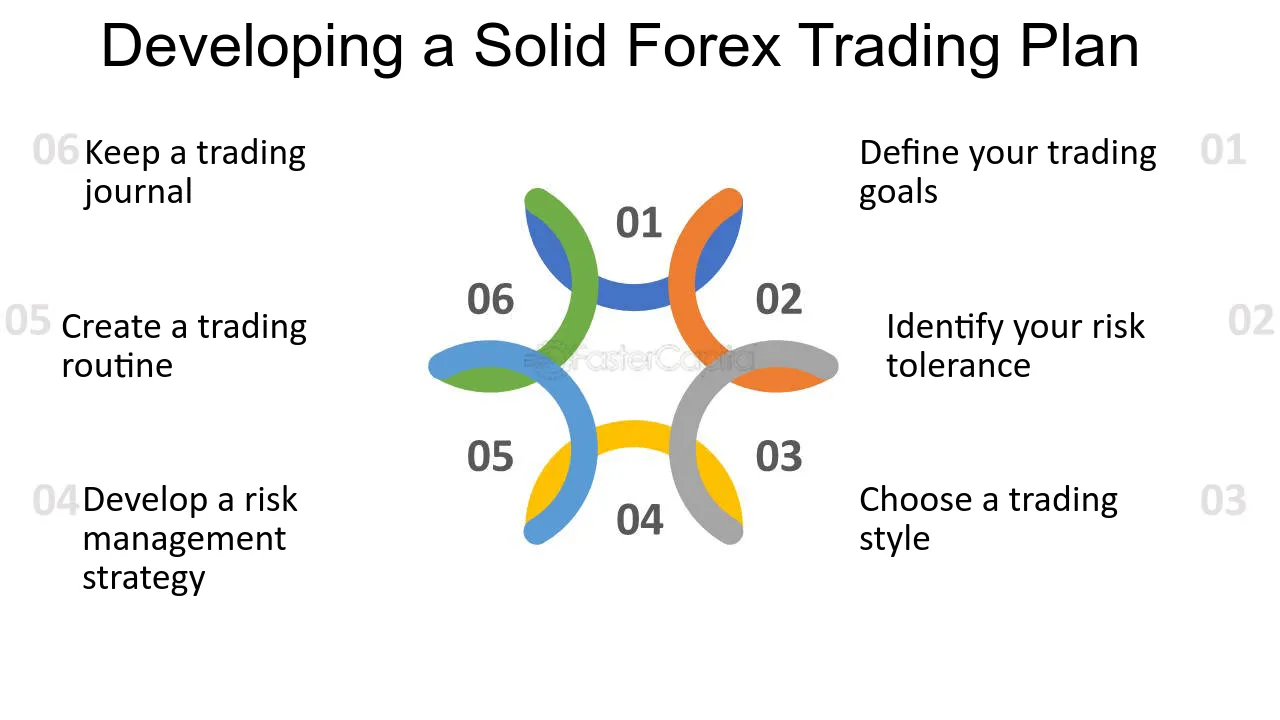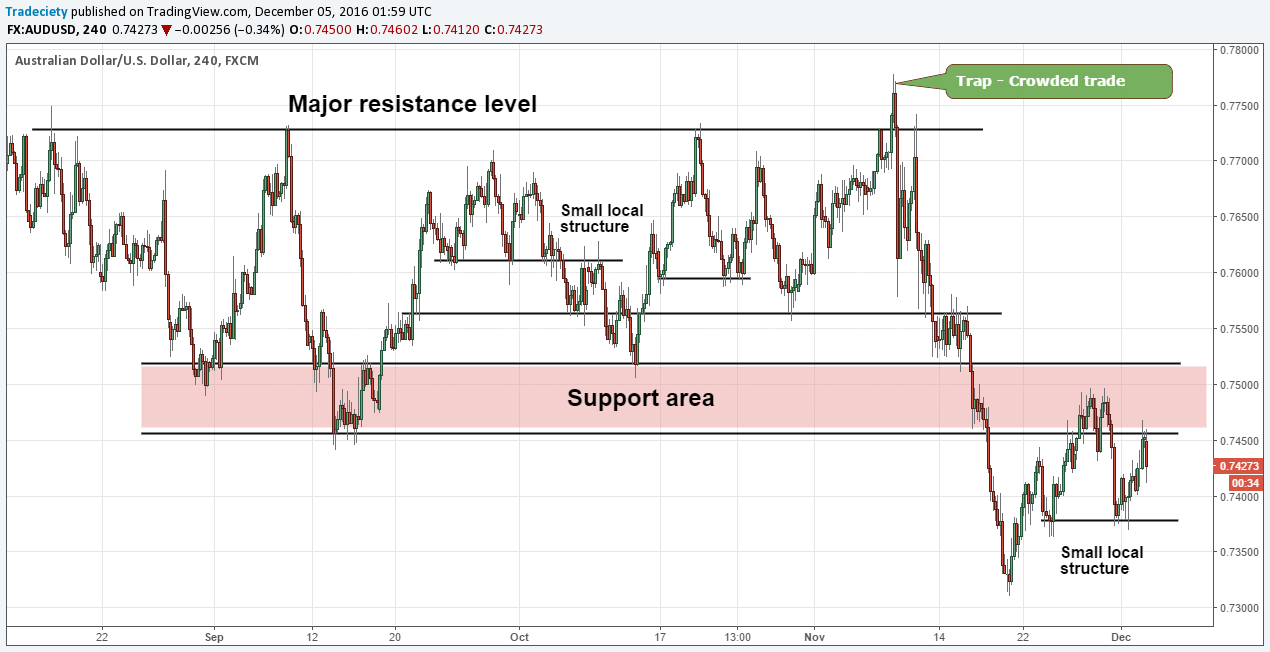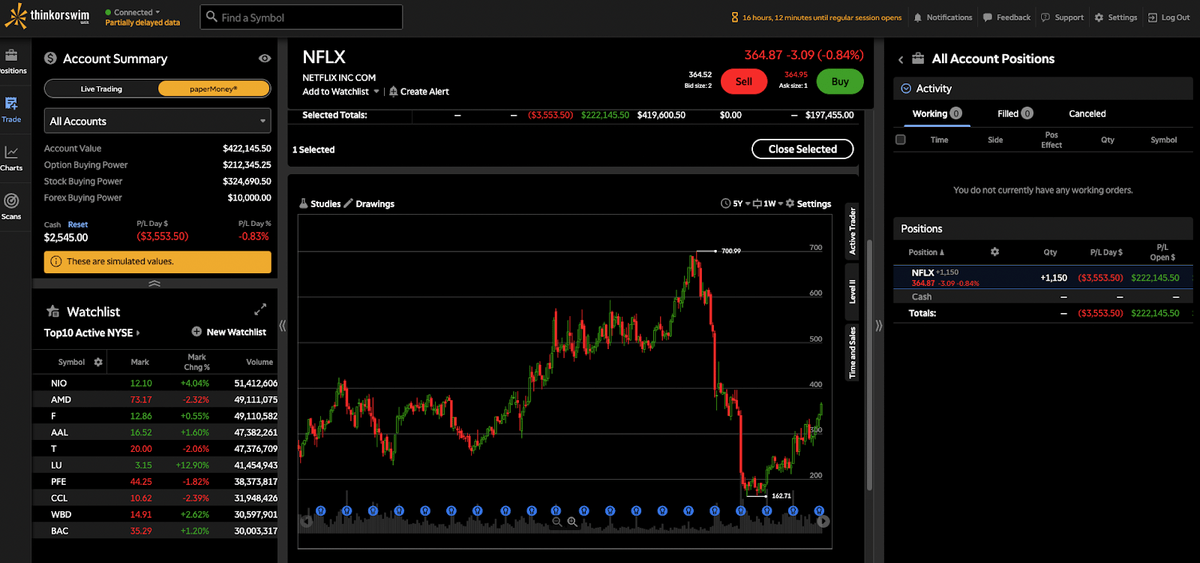In the realm of financial markets, where fortunes can be made and lost in the blink of an eye, having a well-defined trading plan is paramount to achieving success. A solid trading plan outlines a structured approach to trading that helps traders make informed decisions, manage risk, and optimize their performance. Developing such a plan requires meticulous planning, research, and a disciplined adherence to its principles. This article delves into the intricacies of crafting a robust trading plan, exploring the essential elements it should encompass, and providing practical guidance on how to create one that aligns with your individual goals and risk tolerance. Whether you’re a seasoned trader seeking to refine your strategy or a novice looking to navigate the complexities of financial markets, this comprehensive guide will empower you with the knowledge and tools necessary to develop a solid trading plan that will set you on the path to trading success.
Developing a Solid Trading Plan: A Step-by-Step Guide
1. Define Your Trading Goals
Before you start trading, it’s essential to establish clear and realistic goals. What are you hoping to achieve with your trading? Are you looking to generate passive income, grow your capital, or cover expenses?
Defining your goals will help you choose the right trading strategy and manage your risk appropriately.
| Goal | Description | Example |
|---|---|---|
| Passive income | Generate consistent income from trading without actively managing your portfolio. | Investing in dividend-paying stocks or rental properties. |
| Capital growth | Increase the value of your investments over time. | Investing in high-growth stocks or cryptocurrency. |
| Cover expenses | Generate income to cover your daily living expenses. | Trading short-term options or forex. |
2. Choose Your Trading Strategy
There are countless trading strategies available, each with its own advantages and risks. You need to choose a strategy that aligns with your goals, risk tolerance, and trading style.
Some popular strategies include:
Scalping: Taking small profits from small price movements.
Day trading: Opening and closing positions within the same day.
Swing trading: Holding positions for a few days or weeks.
Trend following: Identifying and trading in the direction of established trends.
Fundamental analysis: Analyzing company financials and news to make trading decisions.
Technical analysis: Using charts and indicators to identify trading opportunities.
3. Manage Your Risk
Managing your risk is crucial for preserving your capital and avoiding significant losses. You should set stop-loss orders to limit your potential losses on each trade and never risk more than a small percentage of your trading capital on any single trade.
| Risk Management Technique | Description | Example |
|---|---|---|
| Stop-loss orders | Pre-set orders that automatically close a position when a certain price level is reached. | Setting a stop-loss order at 5% below your entry price for a stock. |
| Position sizing | Determining the appropriate amount of capital to allocate to each trade. | Risk no more than 2% of your trading capital on any single trade. |
| Diversification | Investing in a variety of assets to reduce risk. | Investing in a mix of stocks, bonds, and real estate. |
How to create a solid trading plan?
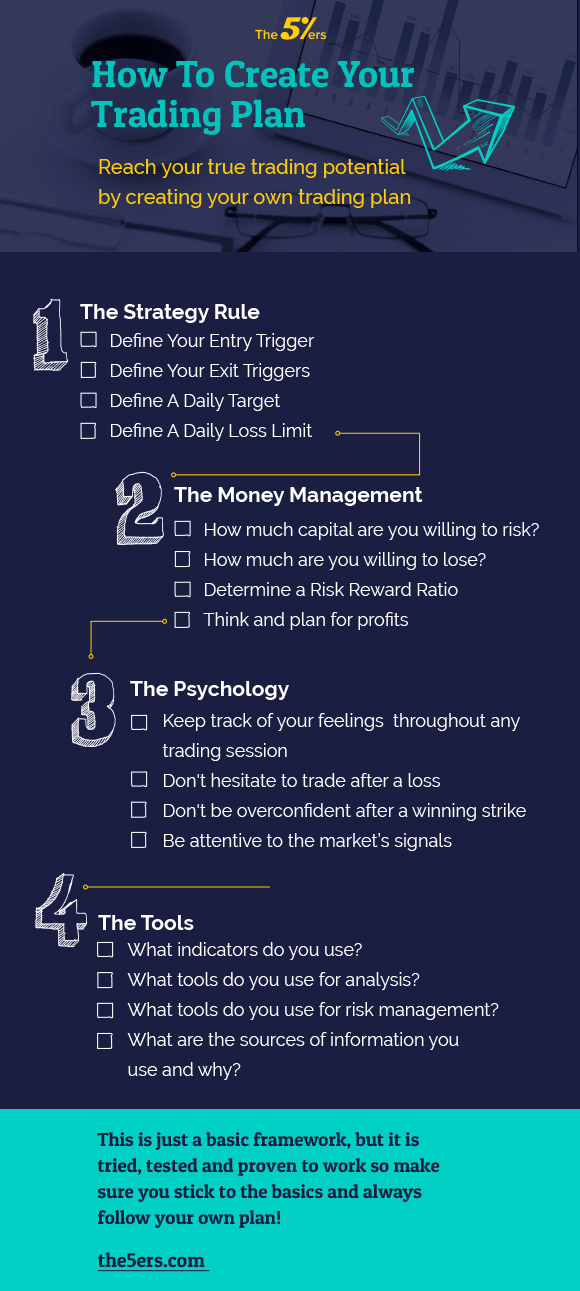
Define Your Trading Goals
Before you start trading, it’s crucial to define your goals. This includes determining what you hope to achieve, such as increasing your capital, generating passive income, or simply learning about the markets. Having clear goals helps you to focus your trading efforts and choose the right strategies.
- Set Realistic Expectations: Don’t expect to get rich quickly. Trading takes time, effort, and discipline.
- Define Your Risk Tolerance: How much risk are you willing to take with your capital? This will influence the types of trades you make and the strategies you use.
- Establish Your Time Commitment: How much time can you dedicate to trading? If you have a full-time job, you may need to choose strategies that require less time and attention.
Choose a Trading Strategy
A trading strategy is a plan for entering and exiting trades based on specific criteria. There are many different trading strategies available, so it’s important to choose one that suits your goals, risk tolerance, and time commitment.
- Fundamental Analysis: This strategy focuses on analyzing the financial health of companies and their potential for growth.
- Technical Analysis: This strategy focuses on analyzing price charts and other technical indicators to identify patterns and trends.
- Swing Trading: This strategy involves holding trades for a few days or weeks, trying to capture short-term price swings.
- Day Trading: This strategy involves entering and exiting trades within the same trading day, taking advantage of small price fluctuations.
Develop a Risk Management Plan
Risk management is essential for any trader, as it helps to protect your capital from losses. A solid risk management plan should include:
- Stop-Loss Orders: These orders automatically exit a trade when the price reaches a predetermined level, limiting your potential losses.
- Position Sizing: This involves determining how much capital to allocate to each trade, based on your risk tolerance and the overall market conditions.
- Diversification: Don’t put all your eggs in one basket. Diversify your investments by trading different assets classes or markets.
What does a trading plan consist of?

Trading Strategy
Your trading strategy is the heart of your plan. It defines the specific methods you’ll use to identify potential trading opportunities and execute your trades. This includes:
- Market analysis techniques: What kind of technical indicators and fundamental analysis will you use to evaluate assets? (e.g., moving averages, candlestick patterns, financial statements)
- Entry and exit points: How will you determine when to buy or sell? What price levels will trigger your actions?
- Risk management rules: How much are you willing to risk on each trade? What stop-loss orders will you use to limit potential losses?
- Trade management approach: How will you adjust your position based on market conditions? Will you use trailing stops, target prices, or other techniques?
Trading Psychology
Trading is not just about numbers; it’s also about managing your emotions. Your trading psychology strategy helps you stay disciplined and avoid common mistakes. It includes:
- Emotional control: How will you handle fear, greed, and other emotions that can cloud your judgment? (e.g., using meditation, journaling, or other techniques)
- Discipline and patience: How will you stick to your plan, even when the market is volatile or your trades are not going your way?
- Avoiding overtrading: How will you resist the urge to trade too frequently or make impulsive decisions?
- Risk tolerance: How much risk are you comfortable taking, and how will you ensure your trades align with your risk profile?
Trading Management
This part of your trading plan focuses on the practical aspects of executing and monitoring your trades. It involves:
- Account setup: Which brokerage firm and account type are best suited for your trading style and needs?
- Capital management: How much money will you allocate to trading, and how will you manage your funds to avoid excessive drawdown?
- Trade record keeping: How will you track your trades, analyze your performance, and identify areas for improvement?
- Trade execution and monitoring: How will you place and manage your orders? How frequently will you monitor your positions?
How do you build a complete trading system?
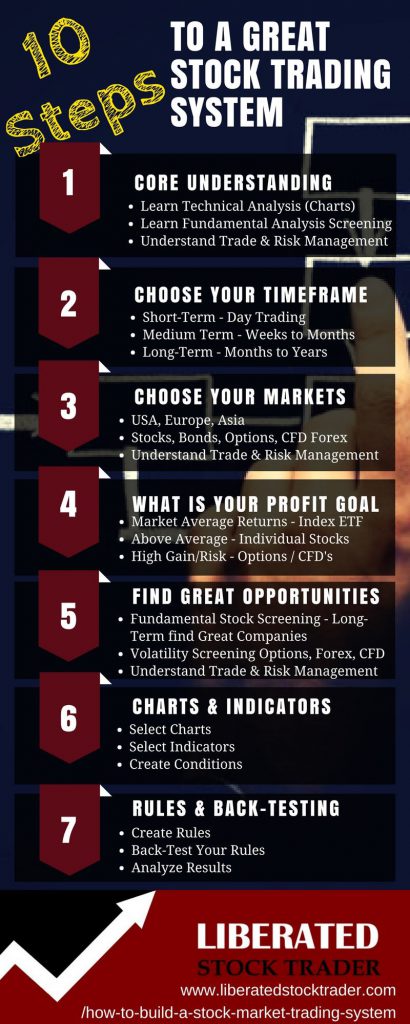
Defining Your Trading Strategy
Building a complete trading system begins with defining your trading strategy. This involves specifying your market focus, trading style, and risk tolerance. It’s important to consider:
- What markets will you trade? Stocks, forex, cryptocurrencies, commodities, etc.
- What timeframe will you trade? Scalping, day trading, swing trading, or long-term investing.
- What type of analysis will you use? Technical analysis, fundamental analysis, or a combination of both.
- What are your risk management rules? Stop-loss orders, position sizing, and maximum risk per trade.
- What are your profit targets? How much profit do you want to make on each trade?
Developing Your Trading Rules
Once you have a defined trading strategy, you need to develop a set of rules that you will follow. This includes entry signals, exit signals, and risk management rules.
- Entry signals: These are the conditions that must be met for you to enter a trade. For example, a price breaking above a resistance level, a positive MACD crossover, or a bullish candlestick pattern.
- Exit signals: These are the conditions that must be met for you to exit a trade. For example, a price hitting a profit target, a price reaching a stop-loss order, or a negative MACD crossover.
- Risk management rules: These rules are designed to protect your capital. For example, you might set a maximum risk per trade, or a stop-loss order to limit your losses.
Backtesting and Optimization
Once you have developed your trading system, you need to test it to see how it performs. This is called backtesting and it involves using historical data to see how your system would have performed in the past.
- Backtesting allows you to identify weaknesses in your system and make adjustments.
- Optimization involves fine-tuning your system to improve its performance.
- Forward testing is then used to test the optimized system on new data to ensure that it is performing as expected.
How do you create a trading program?
1. Define Your Strategy
The first step in creating a trading program is to define your trading strategy. This involves identifying the market you want to trade, the assets you want to trade, and the rules you will use to make trading decisions. You need to decide if you want to trade based on technical analysis, fundamental analysis, or a combination of both. Consider factors like your risk tolerance, investment goals, and time commitment.
- Determine your market and assets: What markets and assets do you want to trade? Stocks, forex, cryptocurrencies, commodities, etc.?
- Identify your trading style: Are you a day trader, swing trader, or long-term investor?
- Define your entry and exit rules: What signals will trigger your entry into a trade, and what signals will trigger your exit?
- Set your risk management strategy: How much risk are you willing to take on each trade, and how will you manage your losses?
2. Choose a Programming Language and Platform
The next step is to choose a programming language and platform that are suitable for your trading strategy. There are many popular options available, each with its own advantages and disadvantages. Some popular languages include Python, C++, and R. Platforms like MetaTrader 4 (MT4), TradingView, and NinjaTrader provide a framework for developing trading programs. Consider factors such as ease of use, performance, and available libraries.
- Python: A versatile language with a vast library ecosystem for data analysis, visualization, and backtesting.
- C++: A powerful language for high-performance trading programs, but it has a steeper learning curve.
- R: A language primarily used for statistical analysis and data visualization, but it can be used for developing trading programs.
- MetaTrader 4 (MT4): A widely used trading platform that provides a built-in programming language called MQL4.
- TradingView: A popular platform for charting and technical analysis that also offers a Pine Script language for developing trading strategies.
3. Implement Your Strategy in Code
Once you have chosen your language and platform, you need to implement your trading strategy in code. This involves writing the logic for your entry and exit rules, risk management, and any other features you want to include. You should test your program thoroughly using backtesting and paper trading before deploying it to a live trading account.
- Backtesting: Test your program on historical data to see how it would have performed in the past.
- Paper trading: Simulate trading using real-time market data but without risking real money.
- Optimize your strategy: Make adjustments to your code based on the results of your backtesting and paper trading.
Frequent questions
What is a trading plan?
A trading plan is a written document that outlines your trading strategy, risk management, entry and exit points, position sizing, and trading psychology. It serves as a roadmap to guide your trading decisions and help you stay disciplined and consistent.
Why is a trading plan important?
A trading plan is crucial for success in the financial markets for several reasons:
It helps you define your goals: What are you trying to achieve with your trading? What are your risk tolerance and time horizon?
It provides a framework for decision-making: When you face a trading opportunity, your plan provides a clear set of guidelines to follow.
It helps you manage risk: By defining your risk management parameters, you can protect your capital and avoid emotional trading decisions.
It promotes discipline and consistency: A trading plan helps you stick to your strategy and avoid impulsive actions.
How do I develop a solid trading plan?
Developing a solid trading plan requires a structured approach and a thorough understanding of your trading style and the markets you intend to trade. Here are some key steps:
Define your trading goals: What are your financial objectives? What is your risk tolerance?
Choose your trading strategy: What type of trading strategy suits your personality and risk profile?
Identify your entry and exit points: When will you buy and sell? What technical indicators and fundamental analysis will you use?
Determine your position sizing: How much capital will you allocate to each trade?
Develop your risk management plan: How will you manage your losses? What stop-loss orders will you use?
Test your plan: Backtest your strategy using historical data and paper trade before risking real capital.
What are some common mistakes to avoid when developing a trading plan?
It’s essential to avoid these common mistakes when creating a trading plan:
Not being specific: Your plan should be clear and detailed, outlining each step of your trading strategy.
Ignoring your risk tolerance: Don’t take on more risk than you can afford.
Overcomplicating your plan: Keep your plan simple and easy to understand.
Not testing your plan: Backtesting and paper trading are crucial to identify any weaknesses in your strategy.
Failing to adapt: The markets are constantly changing, so be prepared to adjust your plan as needed.

